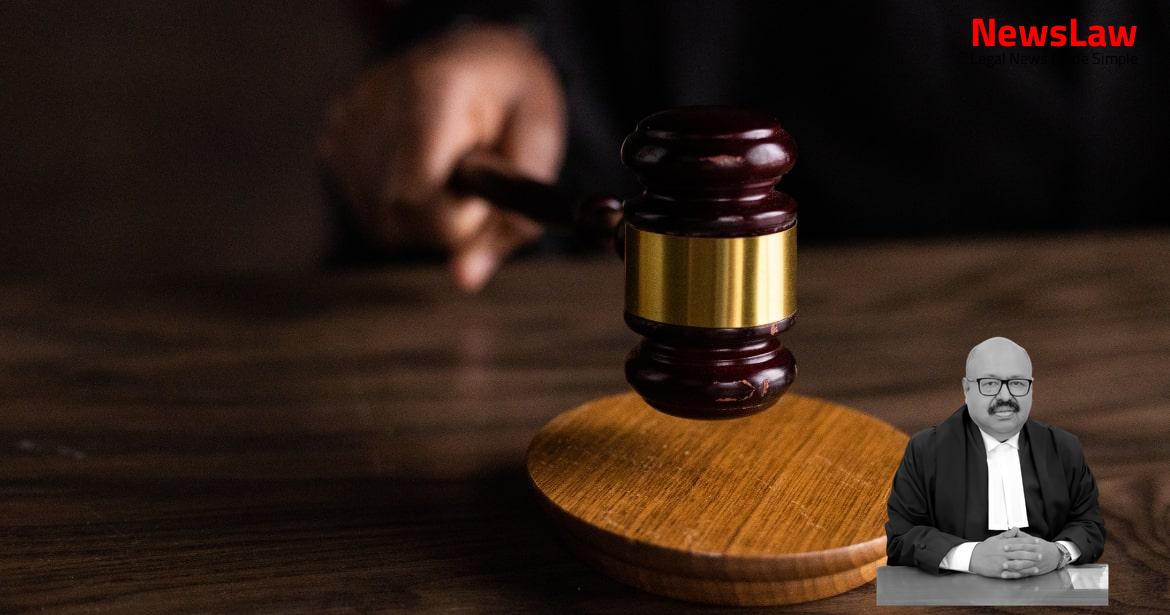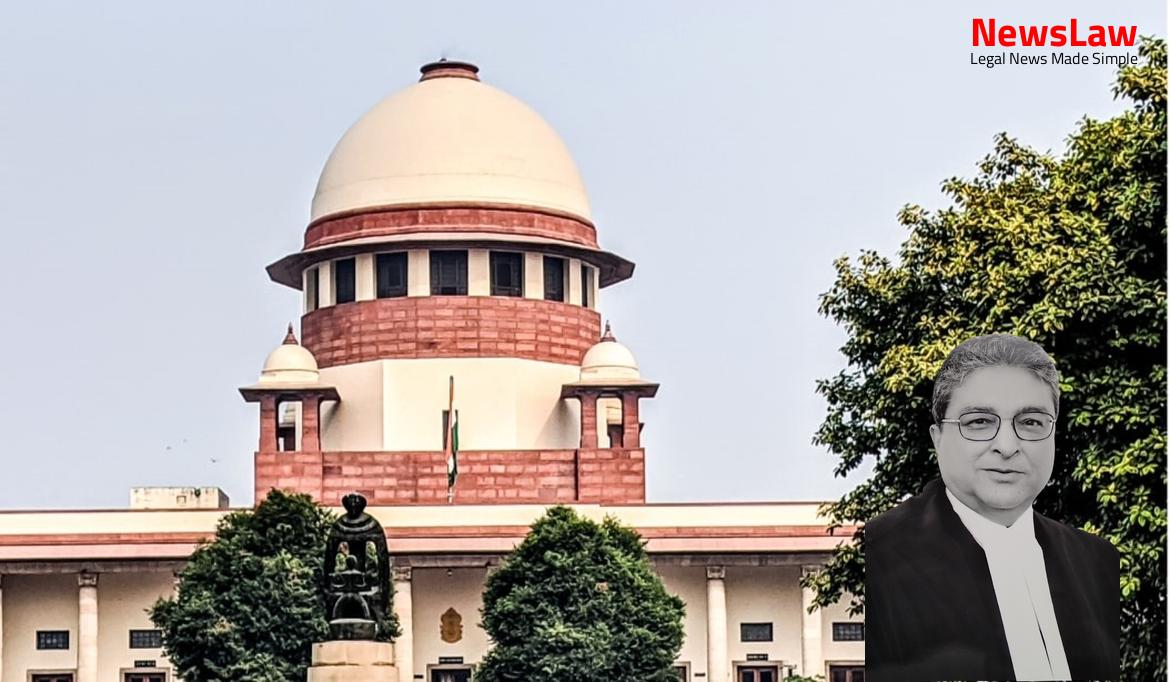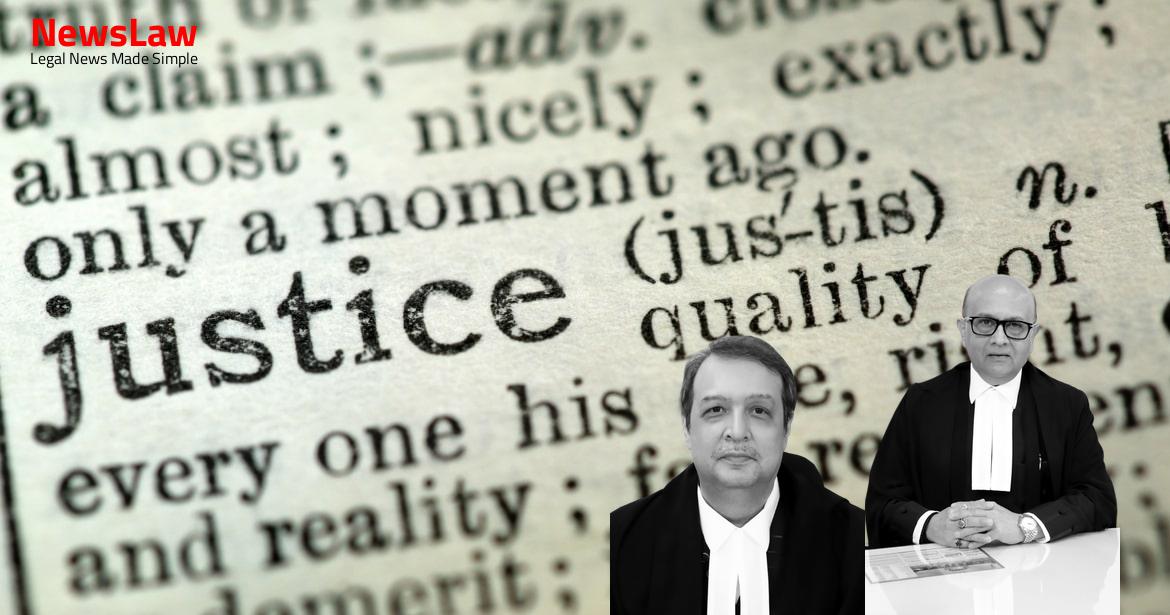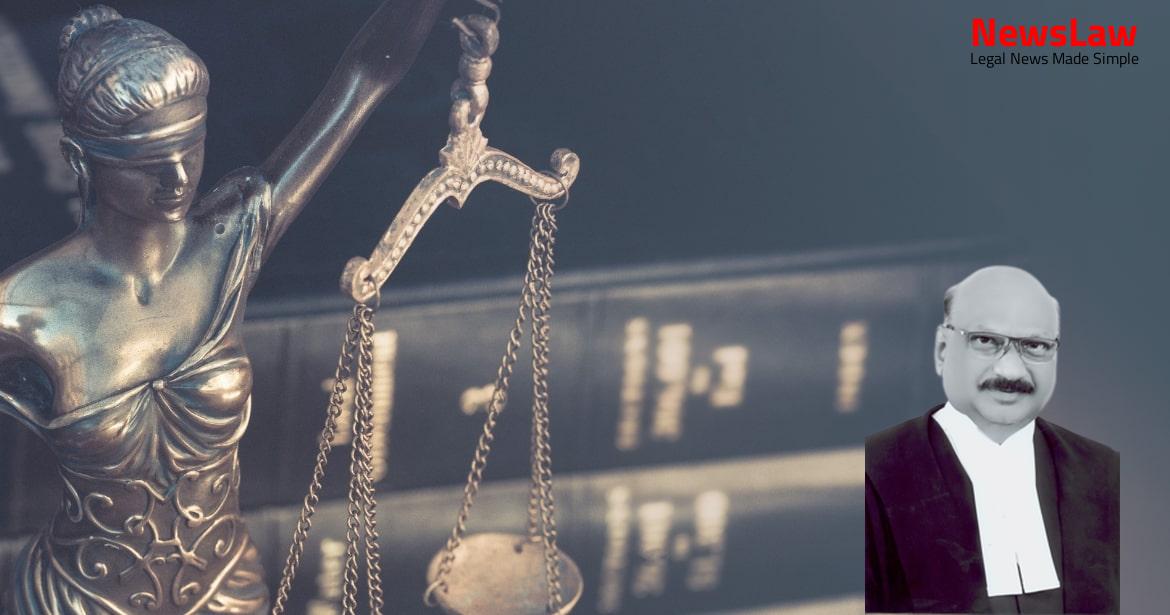In a significant ruling by the Supreme Court of India, a legal battle over the division of ancestral property unfolded between family heirs. The case involved intricate arguments regarding the entitlement of shares in specific properties, with implications for the family’s inheritance. This judgment marks a crucial milestone in delineating the boundaries of ancestral property rights and legal claims among the heirs involved.
Facts
- Plaintiffs, being entitled to 1/6 share each in certain properties, filed for partition and separate possession.
- Appellant No. 2’s self-acquired property was received from sister, Rajeshwari.
- The admissible share is to be calculated from the one-third share inherited by Appellant No. 1 in certain properties.
- Dispute regarding whether the suit properties are ancestral and if Plaintiffs have a share in them.
- Plaintiffs, daughters of Appellant No. 1 through his first wife, Uma.
- Provisions for partition and allotment of shares in the suit properties.
- Contention regarding the claim for partition of ancestral properties by Plaintiffs.
- Information on the ancestral property and its transfer within the family.
- Suit properties detailed along with the entitlement of Plaintiffs.
- Court’s decision on the claim for a share in specific property as coparcenary property.
- Division of landed properties under relevant legal sections and through court commissioner for other properties.
- Confirmation of Plaintiffs as coparceners entitled to a share in the suit properties.
- Details of the propositus’s demise and the heirs left behind.
- Acknowledgment that certain properties are ancestral and directions to draw a preliminary decree accordingly.
- Plaintiffs entitled to 1/3 share each in 5/6 share in properties of CTS No.290 and Block No.168/4
- Plaintiffs entitled to 1/3 share each out of 1/3 share of defendant No.1 in properties of CTS Nos.1100, 1101, 1102, 1103, 1104, 1105, 1106, 1098 and 1099
- Plaintiffs entitled to 1/9 share each in properties of CTS No.92A5A and CTS No.92A5B
- Plaintiffs entitled to mesne profits
Also Read: Revocation of Power of Attorney: The Case of George vs. Thomas
Arguments
- Appellants cite cases Gurupad Khandappa Magdum v. Hirabai Khandappa Magdum & others, Additional Commissioner of Income Tax v. M. Karthikeyan, and Shyam Narayan Prasad v. Krishna Prasad & others.
- Appellants’ Senior Counsel argues that Respondents are entitled to a share in Sl. Nos. 1 and 5 of the 6 suit schedule.
- The Respondents argue that the principle laid down in Gurupad Khandappa Magdum does not apply to the facts of the case.
- They rely on State of (1978) 3 SCC 383, (1994) Supp (2) SCC 112, and (2018) 7 SCC 646 to support their argument.
- They refer to Maharashtra v. Narayan Rao Sham Rao Deshmukh & others to emphasize that a female member inheriting an interest in joint family property under Section 6 of the Act is entitled to both the inherited interest and a notional share upon expressing willingness to go out of the family.
- They assert that the female member does not cease to be a part of the family upon inheriting a male member’s interest without choosing to separate from the family.
- The propositus in this case died in 1991, leaving behind his wife and daughter as Defendants.
- Both sides agree on the number of properties covered by a specific survey number, leading to a non-disputed issue in the case.
- The Respondents claim that the properties in question were self-acquired by the propositus, who was the karta of the family.
- The central issue is whether the properties in question are ancestral coparcenary property or separate self-acquired property of the propositus and his successors-in-interest.
- The share claimed by the Respondents exceeds what they are legally entitled to.
Also Read: Family Property Settlement Agreement: Upholding Rights of Plaintiff No. 2
Analysis
- The Appellants challenged the inclusion of Sl. Nos. 3 and 4 in the preliminary decree on the grounds that these two serial numbers do not form part of the coparcenary and need to be excluded.
- The Trial Court found that the defendants failed to prove the self-acquisition of properties in CTS No. 92A5A and 92A5B, and that there was no documentary evidence supporting the defendants’ exclusive title over these properties.
- The Trial Court also noted that the defendants did not prove the exclusive ownership of CTS No. 92A5A by defendant no.2 as claimed in the gift deeds Ex.D.16 and D.17.
- The Appellants argued that Sl. Nos. 1 and 5 may entitle the Appellants to a share in the property allotted to Appellant No. 1 in the notional partition, but the share succeeded by Appellant No. 1 cannot be considered as coparcenary property.
- The Court found that there was inadequate pleading in the plaint regarding the existence of coparcenary ancestral property between the parties, particularly concerning Sl. No. 2. It was deemed inappropriate to include the share enhanced through succession from mother, etc., for partition.
- The Court emphasized the need for subtle distinction between the share succeeded by Appellant No. 1 and the share derived from his mother and sisters in the family property. Thus, partition claims in the property succeeded by Appellant No. 1, whether through intestate or testate means, were considered illegal and unsustainable.
- The Court held that the inclusion of Sl. No. 2 for division in the preliminary decree was unlawful and not supported by the facts and law of the case.
- The Court rejected the application of the principles in Gurupad Khandappa Magdum case to the present case, and declined to delve into the question of applying the Bombay School of Mitakshara to the facts of the case.
- The Court emphasized the importance of not extending the flair of ancestral property to Sl. No. 2, particularly when the property was acquired through gifts from relatives.
- The judgment and decree of the Trial Court were challenged by both parties, leading to further appeals and cross-objections.
- Inclusion of properties as part of the coparcenary is untenable and illegal as they are separate and self-acquired by Appellant No. 1.
- Entitlement in a share after partition differs from a share determined in a notional partition.
- Judgments such as Gurupad Khandappa Magdum, M. Karthikeyan, and Shyam Narayan Prasad are distinguishable and should not be relied upon for deciding the extent of share in properties.
- Respondents’ argument lacks proper pleadings, evidence, and cannot be considered a straightforward legal question.
- Shares allotted in Sl. Nos. 1 and 5 to the Respondents by the impugned judgment do not need interference.
Also Read: Prashant vs. Anush & Priti Agarwalla: Supreme Court Judgement Summary
Decision
- The Appeals allowed in part by excluding Sl. No 2 from partition
- The preliminary decree stands modified to that extent
- The rest of the findings of the Appellate Court are confirmed
- No costs are ordered
- Preliminary decree confirmed for SI. No 1, 3, 4, and 5
Case Title: SHASHIDHAR Vs. ASHWINI UMA MATHAD (2024 INSC 485)
Case Number: C.A. No.-003780-003781 – 2020



